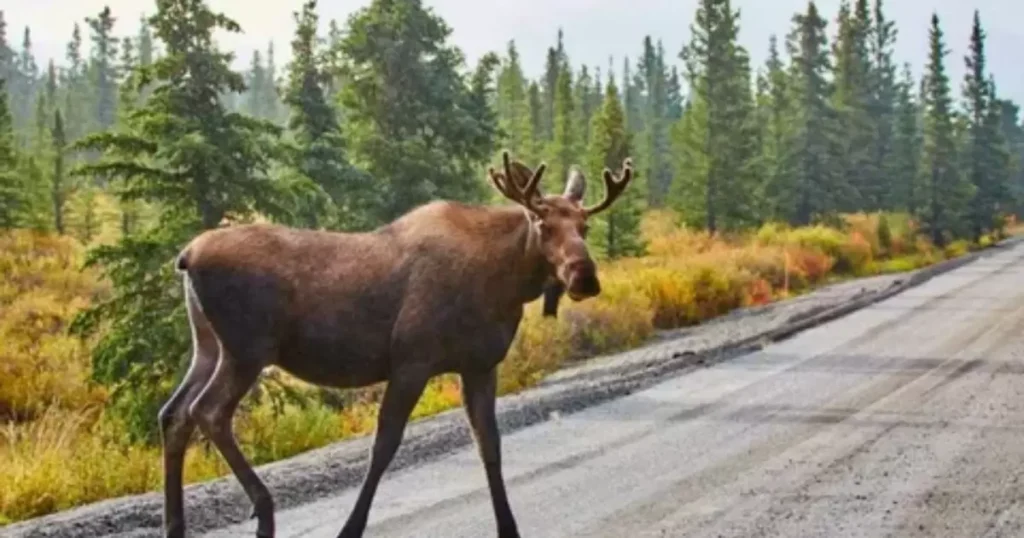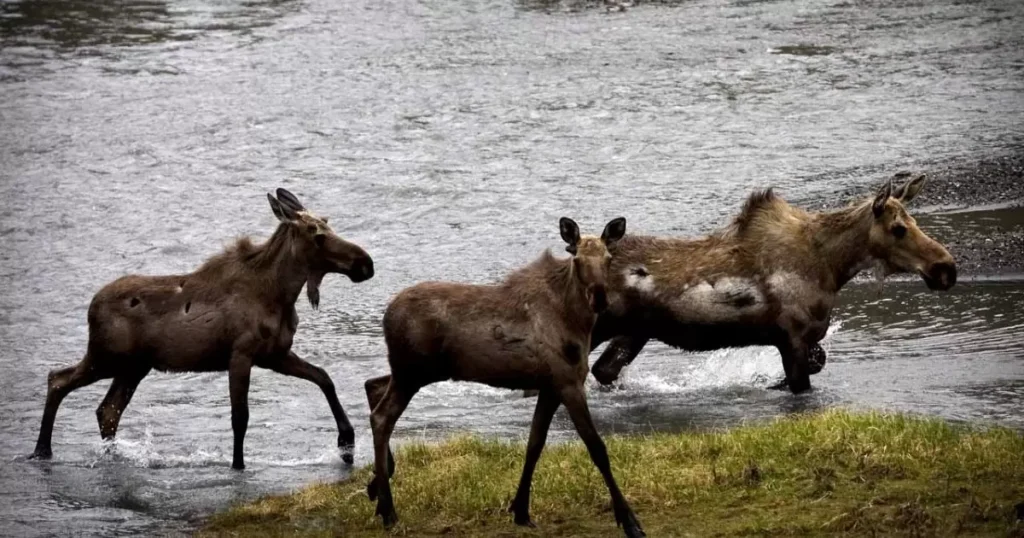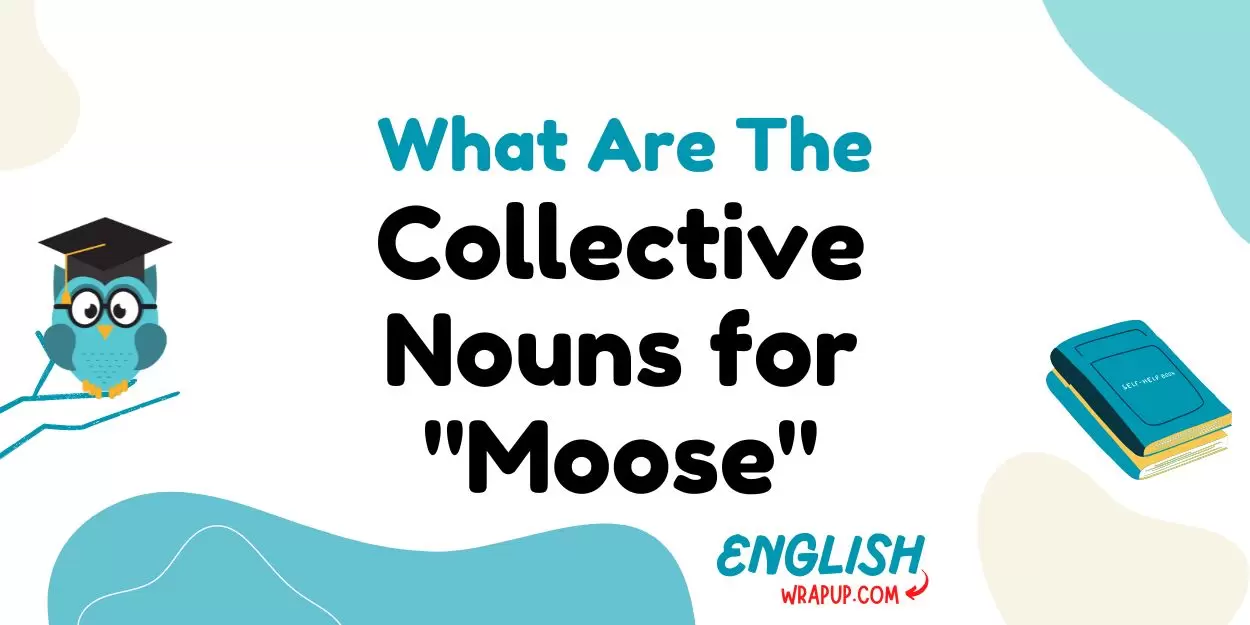Moose, the majestic giants of the northern forests, are iconic symbols of wilderness and strength. When encountered in groups, these impressive animals are described using various collective nouns, each offering a unique perspective on their behavior and presence.
In this article, we will explore the concept of collective nouns and delve into some fascinating examples specifically related to moose.
What Are Collective Nouns?
Collective nouns are words used to describe a group of individuals or things considered as a single entity. These nouns simplify our language and provide a more vivid and interesting way to refer to collections of objects, animals, or people.
For example, instead of saying “a group of birds,” we can say “a flock of birds,” which is more expressive and efficient.
Best Collective Nouns for Moose
- A herd of moose
- A gang of moose
- A troop of moose
- A cluster of moose
- A plunge of moose
- A swamp of moose
- A bellow of moose
- A paddle of moose
- A bushel of moose
- A muster of moose
Let’s explore each of these collective nouns in more detail.
A Herd of Moose
Explanation
A “herd of moose” refers to a group of moose, often seen grazing together in open meadows or browsing through the forest.
Scenario
In the early morning light, a herd of moose emerged from the trees, their massive silhouettes moving gracefully across the landscape.

A Gang of Moose
Explanation
A “gang of moose” suggests a group of moose moving together with a sense of purpose or camaraderie.
Scenario
The hikers stumbled upon a gang of moose, their powerful strides echoing through the dense woods.
A Troop of Moose
Explanation
A “troop of moose” emphasizes the collective movement and coordination of moose, akin to a military unit.
Scenario
As winter approached, a troop of moose migrated southward in search of food and shelter.
A Cluster of Moose
Explanation
A “cluster of moose” describes a closely-knit group of moose gathered together, possibly for socializing or resting.
Scenario
From the lookout point, we could see a cluster of moose gathered by the tranquil waters of the lake.
A Plunge of Moose
Explanation
A “plunge of moose” reflects the sudden and dramatic appearance of a group of moose, often seen near bodies of water.
Scenario
As the canoe rounded the bend, they encountered a plunge of moose drinking from the riverbank.

A Swamp of Moose
Explanation
A “swamp of moose” denotes a group of moose inhabiting marshy or wetland areas, where they feel most at home.
Scenario
The biologist ventured into the swamp, hoping to catch a glimpse of the elusive swamp of moose.
A Bellow of Moose
Explanation
A “bellow of moose” captures the deep, resonant calls of moose during the mating season or when communicating with each other.
Scenario
In the stillness of the forest, the bellow of moose echoed through the trees, signaling their presence to potential mates.
Other Ways to Say “Best Practice”
A Paddle of Moose
Explanation
A “paddle of moose” refers to a group of moose swimming together, their large bodies creating ripples in the water.
Scenario
The tourists watched in awe as a paddle of moose crossed the river, their heads held high above the surface.
A Bushel of Moose
Explanation
A “bushel of moose” suggests a large gathering of moose, possibly in a feeding frenzy or during peak mating season.
Scenario
During the fall, the fields were alive with a bushel of moose, feasting on the abundance of fresh grass.
A Muster of Moose
Explanation
A “muster of moose” conveys the sense of gathering or assembling, often seen when moose come together for protection or defense.
Scenario
As the predator approached, a muster of moose formed a protective circle around the vulnerable calves.
Interesting Facts About Moose
Moose are the largest of all the deer species, with males (bulls) sporting impressive antlers that can span up to 6 feet in width. Despite their size, moose are surprisingly agile and strong swimmers, capable of crossing large bodies of water with ease.
Moose are herbivores, primarily feeding on vegetation such as leaves, twigs, and aquatic plants. In North America, they are often referred to as ” king of the forest” due to their imposing stature and dominant presence in the wilderness.
Final Thought
Collective nouns offer a unique way to describe groups of objects, animals, or people, providing insight into their behavior and interactions.
The collective nouns for moose not only paint a vivid picture of their social dynamics but also highlight the grandeur and majesty of these magnificent creatures.
Next time you encounter a group of moose, think about the various ways you can describe them and appreciate the richness they bring to our language.

I’m Ava Thompson, your expert guide at “English WRAP Up.” I’ve been immersed in the world of English language tests, helping students ace TOEFL, IELTS, BULATS, FCE, CAE, and PTEG. With a wealth of experience in teaching and grading, I’m here to help you master your English exams. Join me on this educational journey, and let’s wrap up your English skills with excellence!



